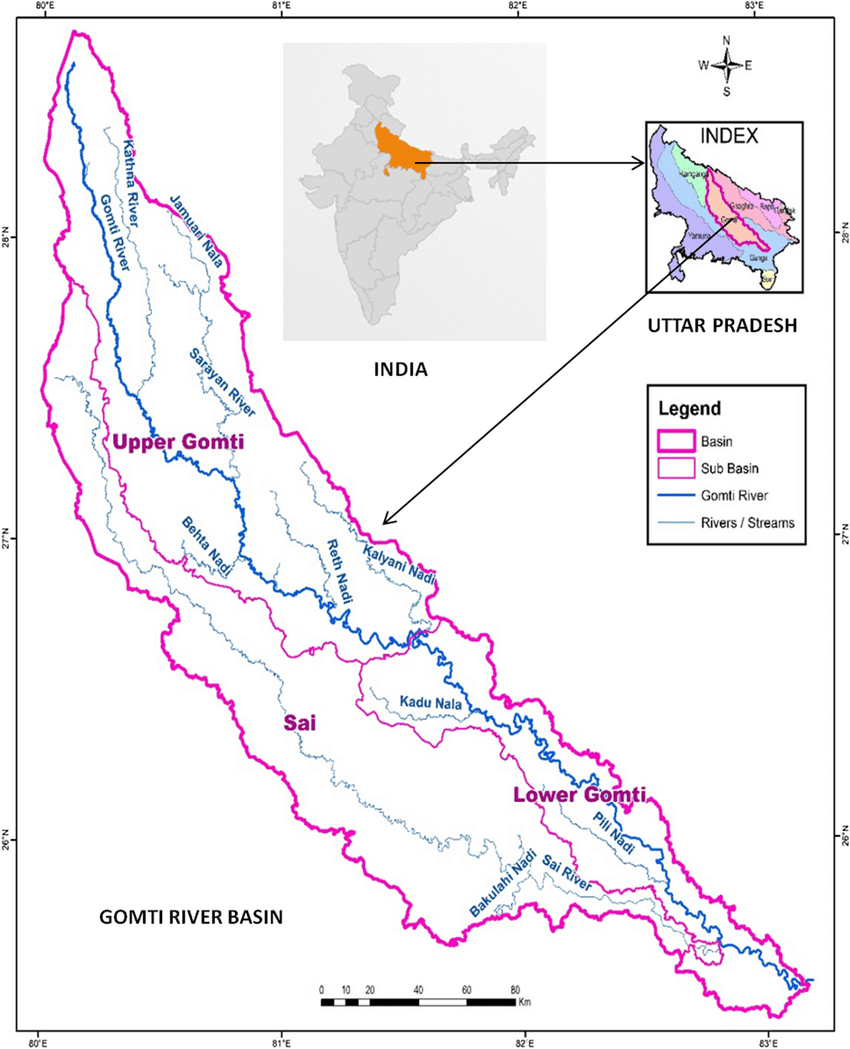Uttar Pradesh
Gomti River
- 15 May 2025
- 2 min read
Why in News?
Environmental experts and citizens have raised concerns about the Gomti River, as it struggles with plummeting oxygen levels, high fecal coliform counts, and a heavy load of untreated sewage. 
Key Points
- River Profile:
- Gomti is a 960-km long tributary of the Ganga River.
- It originates from Madho Tanda in Pilibhit district and merges with the Ganga at Kaithi in Ghazipur.
- In Lucknow, the river faces increasing threats from urbanisation, including low oxygen levels and rising faecal contamination.
- Urbanisation Pressure and Sewage Burden:
- Rapid population growth and city expansion are straining Gomti’s ecological balance.
- The city currently treats 450 MLD out of 730 MLD needed; around 280 MLD of untreated sewage flows directly into the river.
- Mega Township Projects:
- The Lucknow Development Authority (LDA) is planning four major projects: Wellness City, IT City, Educational City, and Prabandhnagar.
- Other key developments include Anant Nagar (Mohaan Road) and Aero City (Amausi Airport).
- These townships lie along major corridors and will further increase population density and sewage load on Gomti.
- Need for Sustainable Urban Planning:
- Environmentalists stress the urgency of scientific urban planning, including integrated drainage, green spaces, Sewage Treatment Plants, and water reuse systems.
- Public Health Concerns:
- Sharp rise in faecal coliform levels and falling oxygen in the river present serious health and ecological risks.
- Untreated discharge from nullahs and inadequate infrastructure pose a threat to both aquatic life and human health.



.jpg)



